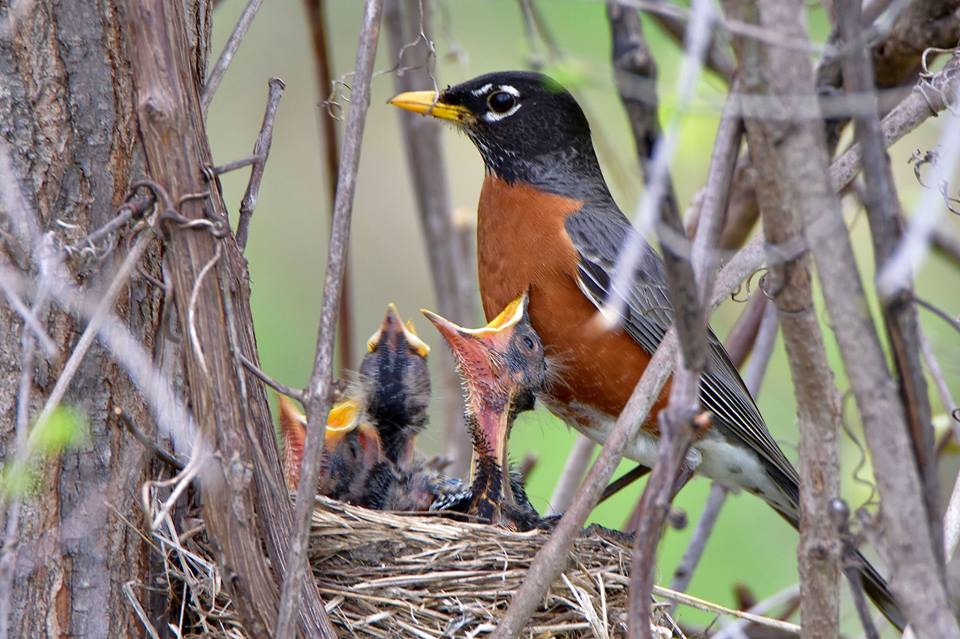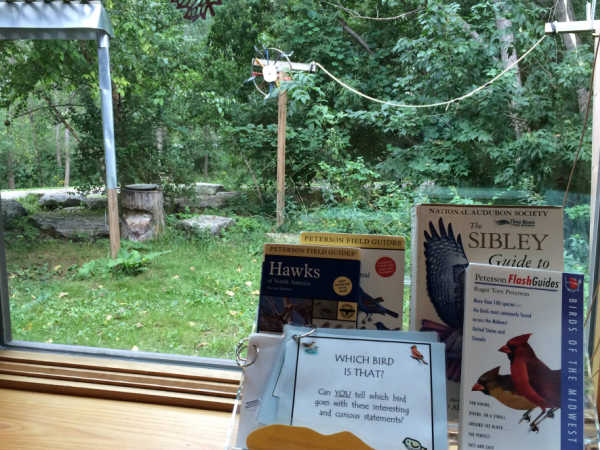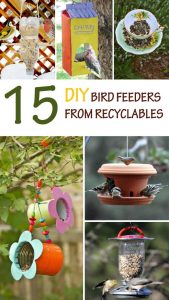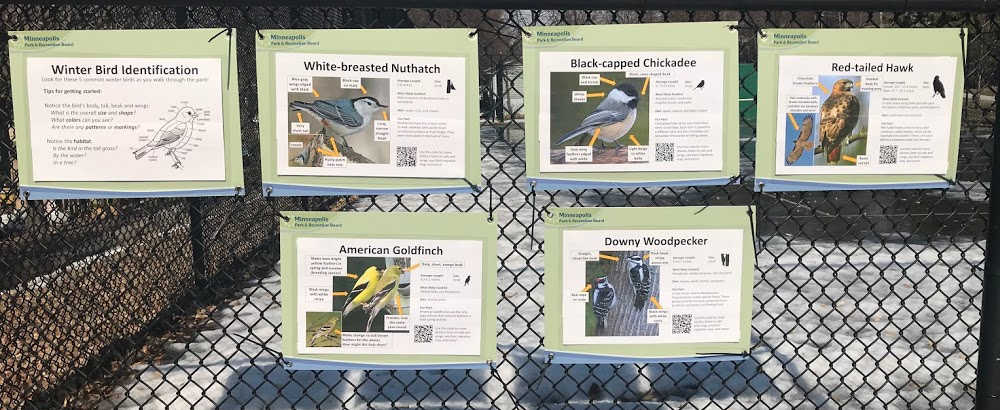Birding has recently become one of my favorite family pass times. This is partially because birding with kids can happen almost anywhere. It is amazing how many birds we can spot or hear in our own backyard. Even driving down the highway near the Mississippi, we have a good chance of spotting a bald eagle. While some parks, such as Eloise Butler Wildflower Garden and North Mississippi Regional Park allow visitors to check out backpacks with birding equipment, not all parks do. Even parks that have packs to loan don’t provide some personal necessities. We find it worthwhile to keep an exploration pack in the back of our van. Here’s a birding checklist of what we keep:
This article contains affiliate links. Purchases through our website help keep it free, but you will find that you have most of these things already.
Birding Equipment To Keep In the Car:
1. Binoculars:
This is probably the most expensive, but also most necessary item on the checklist. I do see binoculars regularly at thrift stores, but its not always easy to determine their quality. We really enjoyed birding at North Mississippi Regional Park, where they were happy to loan us enough binoculars for the family. If you are bringing your own, sharing works pretty well. We like the Imagine Childhood’s Konus 8×21 Compact Binoculars.
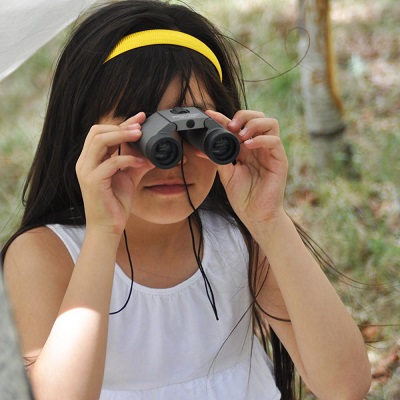
2. Bird Guide Book:
Bird guides are pretty easy to find anywhere that sells books, but I particularly like The Kids’ Guide to Birds of Minnesota for a family backpack because it includes interesting facts including where each bird nests and what their calls sound like. It also has a section with additional activities families can do together. If you are bringing a phone, you could also just open up the Minnesota DNR’s Interactive Bird Songs Poster.
3. Hats for everyone:
I have a family full of Scandinavian children with pale skin and sensitive eyes. I always regret when we don’t have hats with us. Luckily this bucket style hat is cheap and easy to find. I usually thrift them so they are no big loss when they get left behind, which they often do. I actually like this style for myself too, but my teen prefers a Sherlock Holmes style hat and my husband usually prefers a baseball cap or Aussie hat. Whatever their preference, it’s good to keep a few extra tucked in the van.

4. Sunglasses:
As cute as sunglasses are on my kids, and as sensitive as their eyes are, they don’t keep them on. So we pick them up cheap at thrift stores and more often than not, rely on hats.
5. Bug Spray:
I wish I had a good recommendation on this. However, I’m on the search for a safe but effective bug spray to use with my own kids and dog this year. Some State Forest Campgrounds where we have camped have been pretty miserable with mosquitoes and this is supposed to be a bad tick year. Still, I’m uncomfortable using pesticides on kids and dogs – both of whom may just lick themselves at any time. If you have a recommendation or a recipe, leave it in the comments.
 6. Sunscreen:
6. Sunscreen:
I really, really don’t like to use sunscreen, but again, Scandinavian children burn easily. I try to find one with the least harmful chemicals, use sparingly and do my best to keep my kids out of the sun during peak hours. We also double up on green smoothies during summer months.
Birding Checklist of Items We Grab Before Going:
7. Clean and Refilled Water Bottles:
I like a strap on mine so I can carry it. An insulated bottle like the Klean Kanteen will keep your drink cold (or hot).
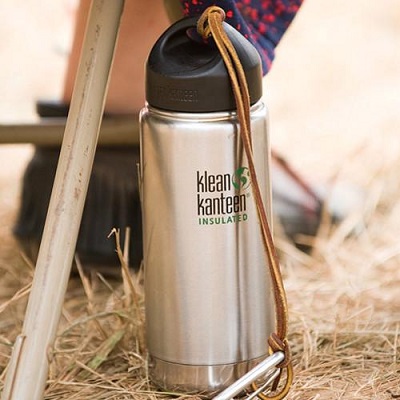
8. Snacks:
I envy parents who remember to keep snacks packed. I always end up stopping to buy a box of granola bars.
 9. Your Cell Phone:
9. Your Cell Phone:
This isn’t absolutely necessary, but it’s nice to compare bird songs with an online resource. As we mentioned above, the Minnesota DNR offers a great resource here. Plus, you might be able to get some good photos.
How to Dress for Birding:
Dress comfortably for the weather, wear layers and comfortable hiking shoes or walking shoes. If you are worried about ticks, you can wear longer clothes and tuck your pants into your socks.
At Home Birding Checklist:
Although sometimes a set of binoculars are nice at home, usually, in the summer, we can just lie quietly on the deck and lazily watch the trees above. Its fun to do this in the morning with a cup of coffee or in the evening when the squirrels are going to bed. In the winter, we can set up a bird feeder right outside of our living room window. There are different types of bird food that attract different kinds of birds. You can learn more about that from the Minnesota DNR. You can also visit a local nature center.
 DIY Birdfeeders to Encourage Backyard Birds
DIY Birdfeeders to Encourage Backyard Birds
April 2022 Note: We had hoped that the Avian Flu, which hit much of the southern states last year, wouldn’t make it up to Minnesota, but it has. The University of Minnesota Raptor Center recommends we not put out bird feeders while this virus is active. Learn more here.
I always love visiting Non-Toy Gifts for fun craft ideas. This list of 15 DIY Bird Feeders Made From Recyclables doesn’t disappoint. My favorite is made with an old dust pan. This can be a fun start to a backyard (or front yard) bird-watching area. We’re working on setting one up in front of our bay window.
10 Year-Round City Birds
You don’t have to leave Minneapolis or St. Paul to watch birds. We found Winter Bird Identification signs at a Minneapolis park with five birds that you might see in the winter in the city. I actually looked up after taking this photo and saw a red-tailed hawk flying above us. This grouping didn’t include my favorite, the cardinal, which are prevalent and easy to spot. Plus we’ve added a few more easy to find urban birds. We’ve added links to more information from the Minnesota Bird Atlas and to videos of each bird’s call.
- White-Breasted Nuthatch (Information)(Call)
- Black-Capped Chickadee (Information)(Call)
- Red-Tailed Hawk (Information)(Call)
- American Goldfinch. While I rarely ever see these in my backyard, I often hear them, and I’ve seen them at nearby Silverwood Park. (Information)(Call)
- Downy Woodpecker. I often see these little guys hopping around my trees. (Information)(Call)
- Northern Cardinal – Remember the males are the red birds. The females are brown, but look similarly shaped (Information)(Call)
- Rock Pigeon – Find these guys downtown where they are the favorite prey of the peregrine falcons (Information)(Call)
- American Robin – Did you know that not all robins fly south in the winter? Look up in the trees instead of down to spot them when the ground is too frozen to catch a worm. (Information)(Call)
- American Crow – Just walk outside. You’ll probably hear them calling to each other. (Information)(Call)
- Canada Goose – Some choose to stay all winter, but they are easiest to spot in the spring through fall. (Information)(Call)
Bird Journaling with Local Illustrators
We have an amazing community of children’s book authors and illustrators in our community. Here are a couple resources for creating the birds you see in a journal or other format:
- Debra Frasier shows us how to make a bird with paper cutting from her November 22, 2022 Scissors Paper Glue newsletter.
- Learn to draw Cardinals with Nancy Carlson in her Nature Drawing with Nancy video series.
A Checklist for the Young Enthusiast
Once your child is familiar with the 10 birds above, challenge them to see how many Minnesota birds on this list they can learn about and check off their list:
- Acadian Flycatcher
- American Avocet
- American Bittern
- American Coot
- American Kestrel
- American Redstart
- American White Pelican
- American Wigeon
- Bald Eagles*
- Baltimore Oriole
- Belted Kingfishers
- Black-and-White Warbler
- Black-billed Cuckoo
- Black-Throated Blue Warbler
- Black-Throated Green Warbler
- Blue-Gray Gnatcatcher
- Brown Creeper
- Brown Thrasher
- Cape May Warbler
- Caspian Tern
- Cerulean Warbler
- Chestnut-Collared Longspur
- Chestnut-Sided Warbler
- Chipping Sparrow
- Common Merganser
- Common Nighthawk
- Dark-Eyed Junco
- Double-Crested Cormorant
- Eared Grebe
- Eastern Kingbird
- Eastern Phoebe
- Eastern Screech-Owl
- Eastern Wood-Pewee
- European Starlings
- Gray Catbird
- Great Blue Heron
- Great Egret
- Green Heron
- Hermit Thrush
- House Wren
- Horned Larks
- Indigo Bunting
- Kentucky Warbler
- Lark Sparrow
- Least Bittern
- Lesser Scaup
- Little Blue Heron
- Mallard
- Merlin
- Mourning Dove
- Nashville Warbler
- Northern Flicker
- Northern Harrier
- Northern Pintail
- Northern Shoveler
- Northern Waterthrush
- Osprey
- Peregrine Falcon*
- Pine Siskin
- Pine Warbler
- Piping Plovers
- Prothonotary Warbler
- Purple Martin*
- Red-Eyed Vireo
- Redhead
- Ruby-Throated Hummingbird
- Sandhill Crane
- Savannah Sparrow
- Scarlet Tanager
- Sedge Wren
- Short-Eared Owl
- Snowy Egret
- Solitary Sandpiper
- Sora
- Swainson’s Hawk
- Swainson’s Thrush
- Tennessee Warbler
- Tree Swallow
- Trumpeter Swans*
- Turkey Vultures*
- Vesper Sparrow
- Western Grebe
- White-Throated Sparrow
- Willet
- Wood Duck*
- Yellow-Billed Cuckoo
- Yellow-headed Blackbird
- Yellow Warbler
- Yellow-Throated Vireo
- Yellow-Throated Warbler
Bonus Points: Barn Owl (According to the Raptor Center, Barn Owls are rare in Minnesota, but there have been a few recorded nest sites)
*Here are a few Hints of places I know of to spot some of the birds on the big list. Leave a comment at the bottom to share where you may have seen others.
Bald Eagles are known to hunt near the Mississippi or larger lakes. Try these two parks to start:
- North Mississippi Regional Park, Minneapolis
- Normandale Lake Park, Bloomington. I once saw one close up at this park hunting fish at dusk.
Peregrine Falcon nest in the City Center in Downtown Minneapolis. They sometimes have a nest cam when the mated pair lay eggs.
Look for Purple Martins in:
Trumpeter Swans are found in these parks:
- Baker Park Reserve, Maple Plain
- Carver Park Reserve, Victoria
- Crow-Hassan Park Reserve, Hanover
- Elm Creek Park Reserve, Maple Grove
- Hyland Lake Park Reserve, Bloomington
- Lake Rebecca Park Reserve, Rockford
- Murphy-Hanrehan Park Reserve, Savage
- Vadnais Sucker Lakes Regional Park, Vadnais Heights
Turkey Vultures are fun to watch. They nest in tall buildings, like the Normandale Towers near Normandale Lake Park in Bloomington.
Wood Ducks make their home in these local parks:
- Gale Woods Farm, Minnetrista
- Baker Park Reserve, Maple Plain
- Hyland Lake Park Reserve, Bloomington
- French Regional Park, Plymouth
- Elm Creek Park Reserve, Maple Grove
- Carver Park Reserve, Victoria
- Eagle Lake Regional Park, Plymouth
- Fish Lake Regional Park, Maple Grove
Useful Links and Printable Resources:
Three Rivers Parks: Grab and print this 7-page Guide to Birds in the Three Rivers Parks to learn which parks are best for spotting each of the birds we list in our checklist and more.
State Parks: The Minnesota DNR offers separate printable bird checklists for each of its parks.
This article contains affiliate links to various affiliate partners. Purchases through our site help keep Family Fun Twin Cities free to use. We receive a small commission on any sales. As Amazon affiliates, we earn on qualifying purchases through our site. Learn more about our affiliate partners here.

